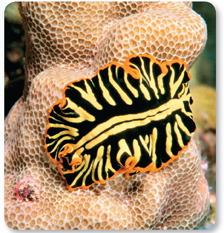27.4 Excretion
 How do animals manage toxic nitrogenous waste?
How do animals manage toxic nitrogenous waste? How do aquatic animals eliminate wastes?
How do aquatic animals eliminate wastes? How do land animals remove wastes while conserving water?
How do land animals remove wastes while conserving water?
excretion • kidney • nephridium • Malpighian tubule
Preview Visuals Note three questions you have about Figure 27–15. As you read, try to answer your questions.
THINK ABOUT IT If you think about the first three lessons in this chapter, you'll realize that they are missing something. We've discussed how respiratory systems obtain oxygen and get rid of carbon dioxide. We've also discussed how animals obtain and digest food and get rid of indigestible material. But cellular respiration generates other kinds of wastes that are released into body fluids and that must be eliminated from the body. What are these wastes and how do animals get rid of them?
The Ammonia Problem
 How do animals manage toxic nitrogenous waste?
How do animals manage toxic nitrogenous waste?
The breakdown of proteins by cells releases a nitrogen-containing, or nitrogenous, waste: ammonia. This creates a problem, because ammonia is poisonous! Even moderate concentrations of ammonia can kill most cells. Animal systems address this difficulty in one of two ways.  Animals either eliminate ammonia from the body quickly or convert it into other nitrogenous compounds that are less toxic. The elimination of metabolic wastes, such as ammonia, is called excretion. Some small animals that live in wet environments rid their bodies of ammonia by allowing it to diffuse out of their body fluids across their skin. Most larger animals, and even some smaller ones that live in dry environments, have excretory systems that process ammonia and eliminate it from the body.
Animals either eliminate ammonia from the body quickly or convert it into other nitrogenous compounds that are less toxic. The elimination of metabolic wastes, such as ammonia, is called excretion. Some small animals that live in wet environments rid their bodies of ammonia by allowing it to diffuse out of their body fluids across their skin. Most larger animals, and even some smaller ones that live in dry environments, have excretory systems that process ammonia and eliminate it from the body.
Storing Nitrogenous Wastes Animals that cannot dispose of ammonia continuously, as it is produced, have evolved ways to hold, or “store,” nitrogenous wastes until they can be eliminated. In most cases, ammonia itself cannot be stored in body fluids, because it is too toxic. Insects, reptiles, and birds typically solve this problem by converting ammonia into a sticky white compound called uric acid, which you can see in Figure 27–14. Uric acid is much less toxic than ammonia and is also less soluble in water. Mammals and some amphibians, on the other hand, convert ammonia to a different nitrogenous compound—urea. Like uric acid, urea is less toxic than ammonia, but unlike uric acid, urea is highly soluble in water.

FIGURE 27–13 Ammonia Some aquatic animals, such as this zebra flatworm, release ammonia as soon as they produce it.

Table of Contents
- Formulas and Equations
- Applying Formulas and Equations
- Mean, Median, and Mode
- Estimation
- Using Measurements in Calculations
- Effects of Measurement Errors
- Accuracy
- Precision
- Comparing Accuracy and Precision
- Significant Figures
- Calculating With Significant Figures
- Scientific Notation
- Calculating With Scientific Notation
- Dimensional Analysis
- Applying Dimensional Analysis




